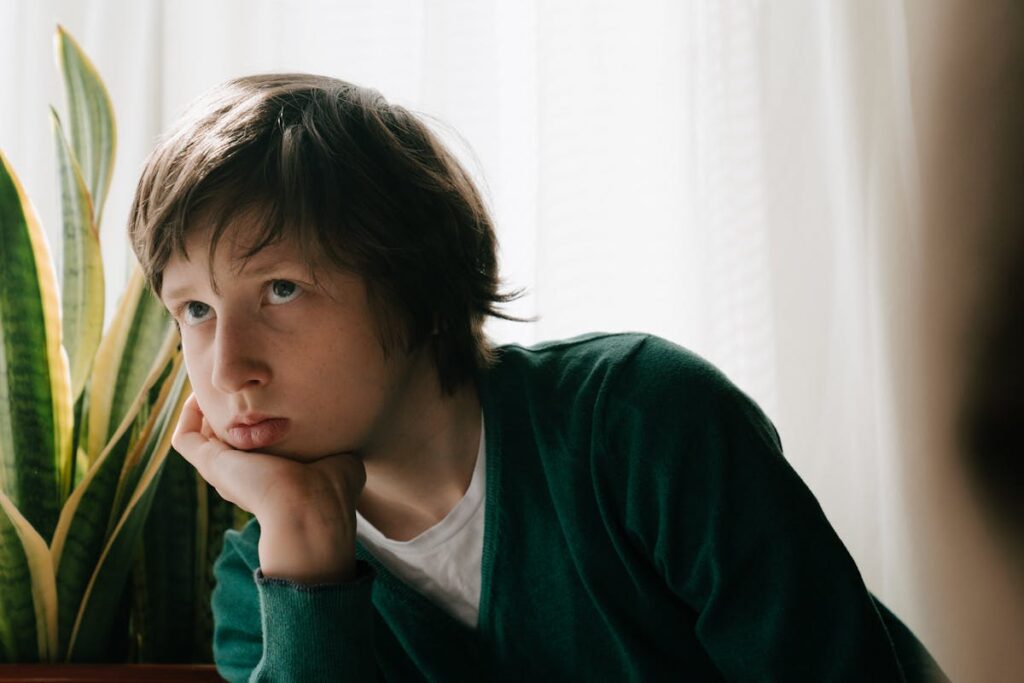It’s usually not intentional, but sometimes boundaries can blur in a parent-child relationship, inadvertently causing roles to change.
While it’s natural for parents to confide in their children occasionally, there’s a fine line between healthy familial support and unintentionally burdening them with emotional responsibilities beyond their years.
Are you unintentionally turning your children into surrogate therapists? In this article, we delve into the two common ways this may happen.
Why we seek therapy
The reasons that motivate a person to go and see a therapist or mental health professional are varied, but often include:
- wanting to process pain, trauma or grief
- to get things they can’t tell anyone else off their chest
- to get help with relationship problems
- support with stress management
- working through mental health conditions (such as anxiety or depression)
- learning coping strategies
After going through therapy sessions, people often experience a feeling of lightness and a sense of relief, unburdened of the load they have been carrying. When done with a qualified therapist, this is healthy and good. The problem comes when we seek all the above through our child.
How a child becomes the therapist
A child often becomes the therapist subtly, driven by factors listed below. The child may step in as a confidant, offering solace. Lack of awareness or access to professional help can deepen this dynamic, leaving the child overwhelmed by emotional responsibilities beyond their years.
1. Triangulation
In cases of a breakdown in a marital relationship, triangulation or emotional enmeshment often arises when parents involve the child to fill emotional gaps. Instead of seeking therapy or resolving issues with the partner, the focus shifts towards the child. One or both parents could be using the child as a counsellor or middle man, or both.
Therapist Dr Jay Stringer says while both parents can fall into this damaging behaviour pattern, mothers are more prone to engage in triangulation than fathers. “Triangulation is a form of emotional incest and has profound effects on the development of one’s individual and relational self,” he says.
A parent may be triangulating all of their children, but will usually have one with whom most of the triangulation occurs. Often, parents draw this child into conflicts or issues that should solely involve them. Children may feel compelled to choose sides, offer comfort or facilitate peace between their parents.
When triangulation occurs, parents often use young children aged between seven and 12 as garbage dumps. A parent unloads all their complaints, baggage and animosity towards their spouse, or graphic details of their trauma and stresses. Parents may manipulate older children into persuading the other parent towards desired outcomes or reporting back information in secret.
Often the child feels sorry for their parent, comforting them in their distress and showing anger towards the other parent. As parents feel heard and understood when talking to their child, they repeatedly re-engage in this destructive behaviour which can continue into adulthood.
The child becomes the balm for mum or dad, and develops their identity in reference to the parent’s needs. The child no longer sees themself as a separate human being, but an extension of their parent. Their happiness is dependant on their parent’s happiness.

2. Codependency
Another way in which a parent may use a child as a therapist is by being codependent. The parent is unable to function or find meaning and fulfilment in life outside of their child. This is often, but not always, combined with triangulation.
There are many facets to codependency, appearing in a wide range of different behaviours. It is characterised by an excessive reliance on the child for approval, validation and a sense of identity. The child is the fuel for the parent’s very existence. The parent is lost and purposeless without their child and can make unrealistic demands of their child.
An adult child may feel they can never leave home, find employment or get married due to them “abandoning” their parent. The parent’s only tool for emotional regulation is their child, and without it, everything falls apart.
Parents who are codependent typically enable or accommodate a child’s dysfunctional behaviour. A codependent parent will fund addictions, tolerate emotional volatility, and cover up or rescue their child from the consequences of their actions, perpetuating a cycle of dependence and dysfunction. It is both mentally detrimental and sometimes even life-threatening to both the parent and child.
They will pursue great lengths to support their child, even at extensive personal loss. There is an unreasonable amount of caretaking, prioritising the needs and desires of the child above their own, often to the point of neglecting their own wellbeing.
Codependency stems from a lack of self-esteem. A parent’s poor sense of self-worth makes them rely on external validation and approval to feel worthy or lovable. The child gives them a sense of meaning, a purpose and drive for life, however toxic the relationship may be.
A codependent parent will struggle or be unable to assert their own needs, desires and boundaries in the relationship with their child. They may feel guilty or selfish for prioritising themselves and may tolerate mistreatment or abuse from the child in an effort to maintain the relationship. They will avoid conflict or confrontation out of fear of rejection or abandonment, leading to emotional suppression and further loss of identity.
When roles are reversed
Triangulation and codependency are highly toxic and complex issues. They can greatly hinder child development and may even lead to psychological disorders. A child acting as their parent’s therapist misses out on their own childhood.
There is also evidence to show that triangulation and codependency impedes a child’s sexual development, leading to unhealthy sexual practices and addictions, or the inability to enjoy a healthy sexual life, leading to marital issues later in life.
In some cases, the only way a child is able to form a new identity is through severing the relationship altogether.
How to stop the cycle
Families that experience these challenges need to seek professional help. Parents need to find different ways of working through life’s changes and develop a self-worth outside of their child. The child’s problems also need to be identified and worked through to create positive outcomes for their future.
Psychotherapy approaches can help, such as cognitive behavioural therapy, talk therapy, dialectical behaviour therapy and family therapy. Individual therapy is an important place to start before seeking group therapy with family members.
If you are concerned that you may be practising any of the above negative behaviour patterns, it is a good idea to seek out mental health services as a matter of priority. Your health, your interpersonal skills and your child’s mental health are important.
Learning healthy new skills doesn’t mean you are stupid or insane; it’s actually the opposite. A mentally healthy person will initiate personal growth and self reflection.
If your child has experienced triangulation or codependency, it is important for them to see a child therapist. The therapist may use play therapy as part of the therapy process and work through the child’s life, trauma or negative behaviours through stories or art. A child psychologist is an expert who has undergone further training specialising in children and young people, and the relevant needs of child psychology.
Remember, if these dysfunctions exist in your parenting, it is often done inadvertently. It doesn’t mean you intended to harm your child or tried to expose them to trauma. However, leaving the problems unaddressed will only lead to further emotional baggage and potential mental health issues.
How helpful was this article?
Click on a star to rate it!
0 / 5. 0
Be the first to rate this post!
Adriana Wales
Related posts
Subscribe
Receive personalised articles from experts and wellness inspiration weekly!

